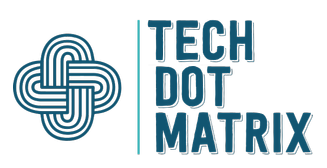
iOS platform is a real goldmine, and every entrepreneur tries to hop on this train. iOS generates an astonishing amount of revenue each year. In Q1 of 2020, App Store generated more than $15B in sales, which is half more than the Google Play Market and shows the over-the-top popularity of the iOS platform.
Apparently, you decided to make your own app for the iPhone, but you don’t know how to approach this complicated process. We’ve prepared an ultimate guide on how to make an app for the iPhone and reveal all useful tips that will help you out. Without further ado, let’s begin.
Ways to Make an App for iOS
There are several ways to approach app development costs. Each of them has its own pros and cons and suits in various cases. Let’s consider them all.
DIY Development
It’s the method that always comes to mind first. You can make an app on your own, and this approach is related to significant cost-savings and full control over the development process. But be aware of a few significant drawbacks.
Pros
- You control everything in the project
- You have a clear vision of end-product
- There are no communication difficulties
- This method is free
Cons
- A significant tech knowledge base is a must
- Requires much time
- Long time-to-market
Also Read: How to fast charge your iPhone without buying extra Apple product
Freelance Development
This method is pretty popular since it’s a cheap option if you can’t make an app on your own. But be prepared for communication difficulties, the risk of broken deadlines, and abandoning the project.
Pros
- Cheap option
- Ease of recruitment
- Large specialist diversity
Cons
- Possible language barriers
- Management difficulties
- The project may be abandoned
In-House Team
Making your own development team and gathering all developers under one hood is another way of iOS app development. With this method, you can expect over-the-top communication and management convenience. But the price of these conveniences is pretty high, both in time and funds.
Pros
- Top-notch teamwork
- No communication difficulties
Cons
- The hiring process takes time
- A large amount of expenses (office rent, hardware, software license, salaries, sick days, and so on)
Development Outsourcing
If all methods that we mentioned before are not for you, it would be wise to outsource app development to a professional team. You’ve got a large number of professional development companies at your disposal, and all of them can provide excellent iOS app development. Moreover, you can choose a suitable region based on the cost of outsourcing mobile app development.
But be aware of some minor inconveniences like communication difficulties and the constant need for meetings.
Pros
- Cheap
- Quick time-to-market
- Less management time required
- A huge number of vendors to choose
Cons
- Language barriers may appear depending on the company’s location
- Time zones difference
Do Your Homework
Before you start app development, you must define a lot of important things related to your brand-new app. You must make it all by yourself to be prepared for communication with the IT vendor.
Make a Market Research
This is an important step that can give you crucial information about the market you aimed for and what you should add to your future app. This research consists of several aspects:
- Competitor analysis. Learn your future competitors, what they provide, how they are doing it, and what they lack.
- Target audience analysis. Define for whom you are creating your app.
- Choosing your monetization model. Pick the way how your app will be gaining profit. There are several monetization models in the picture below, so you have plenty of options to choose from.
Make a List of Features
Make a list of features that you want to see in your app. This list will help you in further negotiations with the development company, and the app development process will start faster. Moreover, you can split all your features into two categories: MVP and Additional features.
A minimal Viable Product or MVP is a set of the most vital features that provides essential functionality. MVP is very useful if you want to reduce time-to-market and make a basic app version to see market response.
Additional features are not on the MVP list and are not necessary at the moment of release. These features can be added in further updates to make the app more functional and powerful.
iOS App Development Nuances
iOS development is related to various pitfalls that you should be aware of as a product owner. These pitfalls are closely connected to the iOS platform.
Human Interface Guidelines
It’s a set of strict documented rules that should be followed. They are related to UI/UX development methods made to deliver over-the-top interfaces and user experience on the iOS platform. These rules should be followed to avoid various release issues since if your app doesn’t meet these guidelines, it will be rejected from release. You can see an example of Human Interface Guidelines in this picture below.
Swift
This programming language is the one and only programming language for iOS at the moment. Even though Objective-C is another iOS programming language, it’s abandoned by Apple, and no further updates will come. Swift has a lot of benefits that make it a superior language for iOS app development. They are listed in the picture below.
Hardware Limitations
Even though there are not so many iPhone models on the market, they all have their own memory and storage limitations that should be taken into account. Every app must keep a balance between performance and memory consumption. If the app runs smoothly on modern iPhone models, on older ones, it may consume all available memory and can be terminated by OS. Keeping a balance is critical.
Wrapping Up
We’ve revealed all pitfalls related to iOS app development and ways to approach this complicated process. From now on, you’re armed with knowledge and ready to make your own iOS app.
Author’s bio:
 Maria Diachenko is a tech writer at Cleveroad. It’s a web and mobile app development company in Ukraine. Maria enjoys making how-to tech guides, describing programming trends and IoT innovations.
Maria Diachenko is a tech writer at Cleveroad. It’s a web and mobile app development company in Ukraine. Maria enjoys making how-to tech guides, describing programming trends and IoT innovations.



